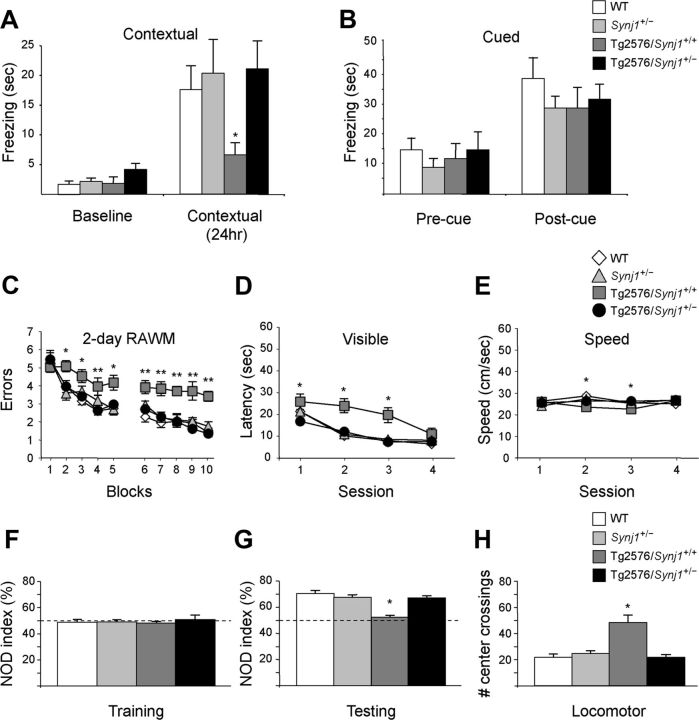Figure 1.
Hemizygous deletion of Synj1 ameliorates memory and behavioral deficits in Tg2576 mice. A, Freezing response in the FC paradigm in 5- to 6-month-old WT (n = 12), Synj1+/− (n = 16), Tg2576/Synj+/+ (n = 8), and Tg2576/Synj1+/− (n = 12) mice. B, Freezing responses in the auditory cued FC with the mice used in A. C, Two day RAWM. WT (n = 9), Synj1+/− (n = 9), Tg2576/Synj1+/+ (n = 8), and Tg2576/Synj1+/− (n = 9). D, Visible platform test; WT (n = 9), Synj1+/− (n = 9), Tg2576/Synj1+/+ (n = 7), and Tg2576/Synj1+/− (n = 9). E, Swim speed; WT (n = 9), Synj1+/− (n = 9), Tg2576/Synj1+/+ (n = 7), and Tg2576/Synj1+/− (n = 9). F, NOR training; WT (n = 9), Synj1+/− (n = 9), Tg2576/Synj1+/+(n = 7), and Tg2576/Synj1+/− (n = 9). Exploration time is expressed by novel object discrimination (NOD) index = amount of time spent exploring novel object × 100/time exploring novel object + time exploring familiar object. G, NOR testing. H, The hyperlocomotor activity displayed by mice tested in NOR.

